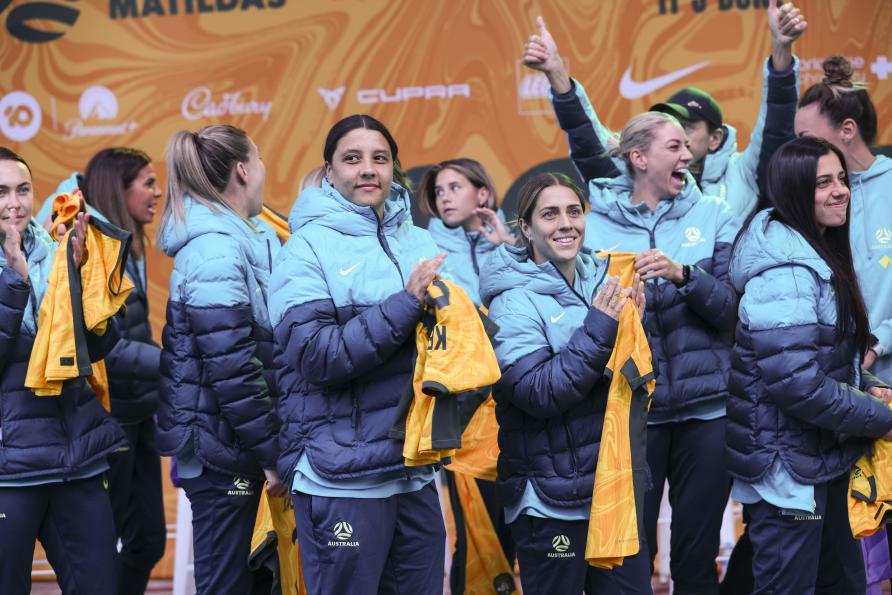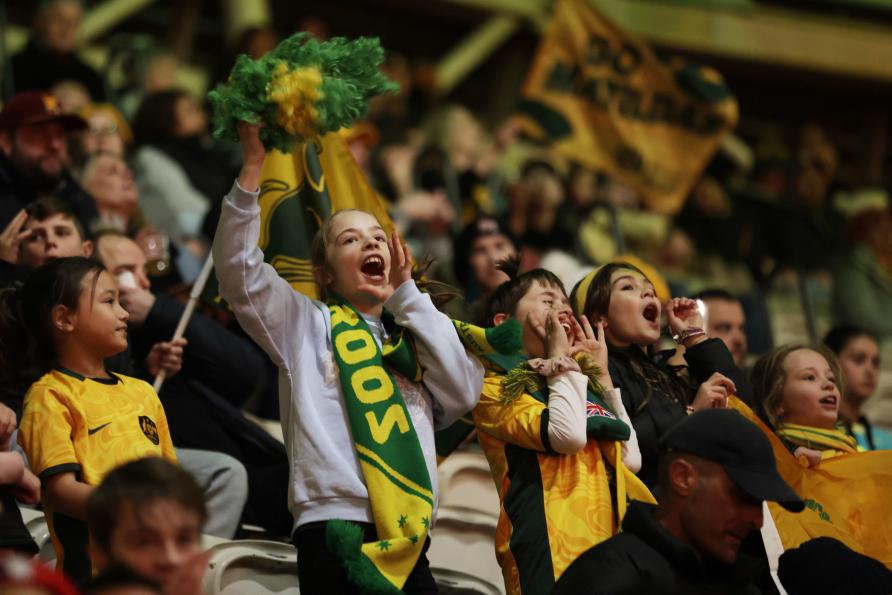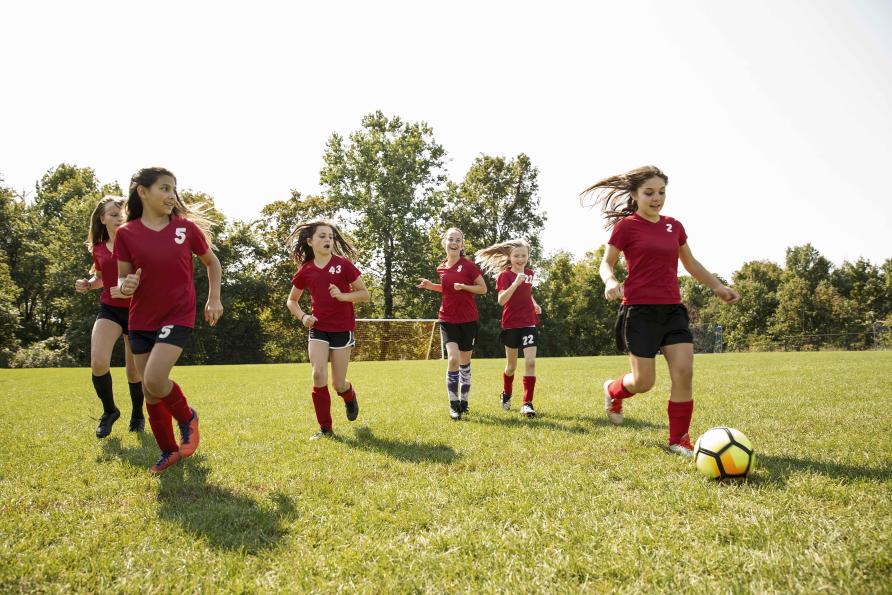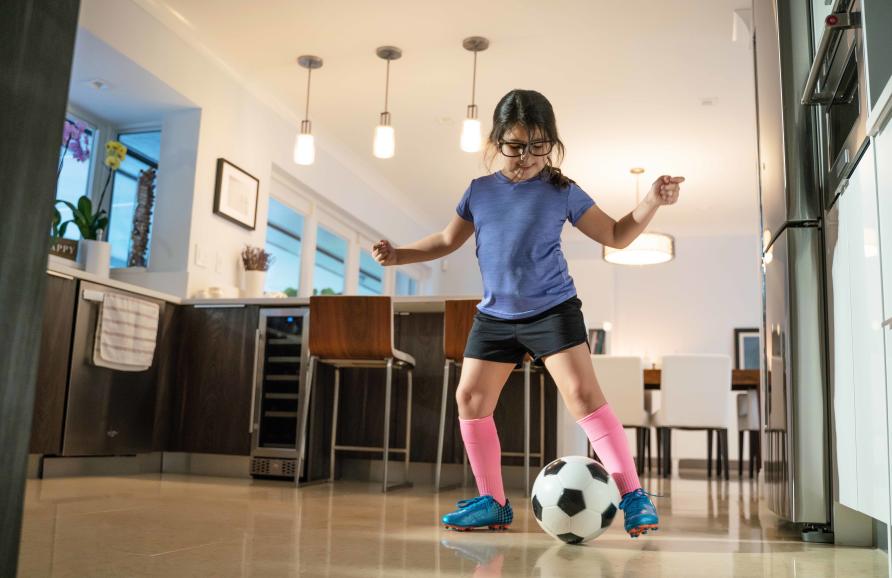Go Matildas!

There are really only a few times in sporting history when such a big momentum builds around an event that it can actually change how we see the world.
The lead up to the 2023 FIFA Women’s World Cup Soccer, jointly hosted by Australia and New Zealand, feels to me like this could be one such event.

There’s no doubt that this is a moment for soccer (known as football in most parts of the world), but it’s also a big opportunity for sport in general. It’s a chance to capture the collective imagination of Australia’s young people when it comes to playing sport.
Particularly girls.
Magic sporting moments
Ask a Matilda who their idol was growing up and many of them will cite Indigenous Australian sprinter Cathy Freeman.
For many young Australians at the time, the ‘Cathy Freeman moment’ came at the Sydney Olympics in 2000, when home crowds roared her across the finish line to win the women’s 400 metres for Australia’s 100th gold medal.
Her victory was an inspiration to a generation of young Australian athletes.
Fast forward two decades or so, and our nation’s most high-profile and successful soccer players – Sam Kerr – is now providing the same inspiration to young athletes.
But this World Cup is far bigger than just one player, and perhaps that’s why the Australian soccer team – the Matildas – are possibly the most significant influence over girls’ engagement in sport since Cathy’s historical win.
Over the last couple of months, as the country’s enthusiasm about hosting a World Cup began to build, my 10-year-old daughter started papering her bedroom wall with homemade profiles of players. The 12-year-old son of a friend is trying to get any sympathetic family member to buy him the official soccer jersey of every team he’s going to watch over the coming weeks.

We, as a family, are living and breathing the excitement.
As a junior player, my daughter (along with 100 other young athletes from across the state) got to walk around the stadium ahead of the Matilda’s pre-Cup friendly against France.
It’s an experience those kids will treasure forever – further fuelling their desire to strive for excellence in sport.
But the World Cup itself could take it to the next level.
Be what you can see
The attention and media focus on the Matildas has also shone a light on the power of being a team.
In particular, the diversity of the team has added to the richness of these women as role models – both off the field and on it.
There are the new young players, the experienced, the Indigenous players, a new mother and a hearing-impaired player. Together, all of them send a message to young players that you can come from anywhere, diversity is celebrated and it’s possible for anyone to play at an elite level.
With children around the country devouring the movements of the team over their ‘socials’, young fans also get a glimpse into the inner workings of the players and their strong team bond.

This unity and passion is contagious – and it’s spreading.
With a Matildas team that is smashing through glass ceilings, young kids – particularly girls – can see a very real and tangible example of ‘be what you can see’. This is important because in Australia women are under-represented in organised sport – whether we’re talking about participants, coaches, officials, administrators or board members.
In fact, only a third of Australian women and girls aged 15 and over take part in a sport-related activity at least once a week.
And if we look at soccer – it’s currently the fifth most popular sport for young girls and second for boys. This participation peaks at around age 11, before slowly declining.
Significantly, this decline is sharper for girls.
While the World Cup presents a clear inspiration for kids – it should also inspire parents.
There is a camaraderie among fans and soccer-loving communities that many of us strive for when we encourage our children into sport.
Of course, we want our kids to be physically active and to build their skills, but it’s also an opportunity to develop the resiliency, mental fitness and connectedness that comes with being involved in organised sport. In fact, young people who participate in sport are more likely to have improved mental health across their lives.
But to get our kids involved, youth sports needs proper funding. It’s happening, but not quickly or broadly enough.

Grassroots involvement
Some of the key barriers to a child’s participation in organised sport are social factors like cost, time, transport and environment.
An organised football team for 11-year-olds is largely run by volunteers, but the cost to parents is still in the vicinity of $A800 per season to cover uniform, club, venue and running costs. This can mean kids miss out.
Having women’s soccer on the world stage and the Matilda’s playing on home soil provides the momentum we need to capitalise on engagement in sport at every level, at school or in the community; the support and infrastructure must complement this engagement to open-up opportunities to anyone who wants to play.
There are currently boys and girls all over the country replicating what they see on the pitch or on TV.
They’re kicking the ball in the backyard (or, if they’re like my kids, down the hallway), they’re searching player profiles, they’re arguing about their favourite player.
Matilda fever, and its ripple effect, could be far reaching for Australian sport – and girls participation rates – if we embrace this moment and the benefits that could flow from it.
Go Matildas!
This article was published by Pursuit.












